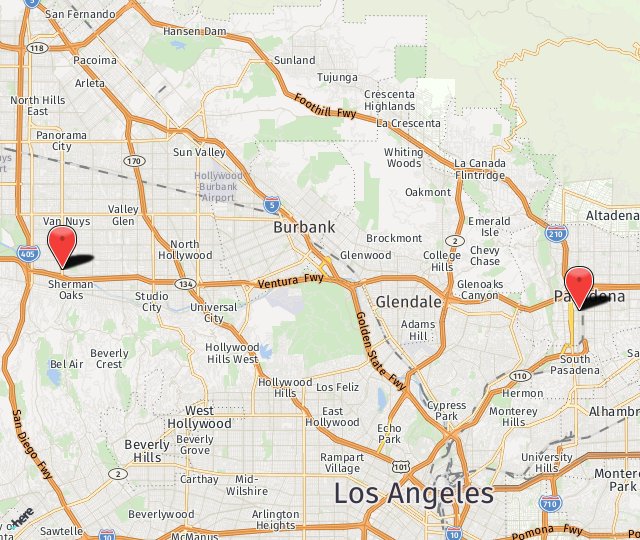Oral and maxillofacial surgery is the treatment of problems affecting the mouth, teeth, gums, jaws and related facial structures. Procedures are often performed on patients with skeletal and dental irregularities that occur as a result of congenital defects, injury, disease or other factors. Maxillofacial surgery is also performed to treat patients with oral cancer and jaw cysts.
Patients with these conditions may have an abnormal or unbalanced facial appearance, and may have difficulty chewing, swallowing or speaking. The goal of oral and maxillofacial surgery is to treat the problem while achieving the most aesthetically pleasing result possible.
Oral and maxillofacial surgery may include tooth extractions, reconstructive jaw surgery, and treatment for temporomandibular joint disorders (TMD). Depending on the patient's condition and the surgical repair necessary, oral maxillofacial surgeons may work in conjunction with plastic surgeons to achieve the best results.
Additional Resources
Bone grafting is a regenerative treatment option for patients who have lost quality and quantity of supporting bone tissue as a result of periodontal disease. This procedure is often needed before dental implants can be placed. It also helps protect the teeth from bacteria, trauma and further degeneration.
Gum grafting is a surgical procedure that helps protect the tooth roots and improve the appearance of the smile for patients who are self-conscious about receded gums caused by gingivitis. The gums help protect the mouth from bacteria and trauma while also covering the ends of the teeth for a pleasing smile. Gum recession can therefore be both a cosmetic and a medical concern.
An impacted tooth is a tooth that has not broken through the gums. This condition is most commonly associated with wisdom teeth. Wisdom teeth may remain in the gums causing no symptoms or side effects, however, in many cases, an impacted tooth can cause swelling and pain.
Orthognathic surgery involves correcting jaws that do not meet correctly, or teeth that do not align properly. In most cases, teeth are straightened, or properly aligned, with orthodontics before corrective jaw surgery can be performed to reposition misaligned jaws. This not only improves facial appearance, but ensures that teeth meet correctly and function properly. Orthognathic surgery allows for the repositioning of teeth and facial bones to create a jaw that works and functions properly, and has a more balanced appearance. There are a number of types of orthognathic surgery.
Laser gum treatment is a noninvasive, painless procedure that uses advanced laser technology to treat a wide range of gum conditions. More commonly used than they once were to treat certain types of gum problems, lasers allow many procedures to be performed with great precision, few complications and little pain.
Neuromuscular dentistry is an area of dentistry that focuses not only on the teeth as they relate to the jaw, but on the nerves, muscles and joints as they relate to the jaw. By combining the principles of anatomy and physiology, neuromuscular dentistry works to achieve an optimal bite (occlusion) and jaw alignment. Neuromuscular dentists examine how all parts of the mouth and jaw work together. The objective of a neuromuscular dentist is to relax the jaw muscles in order to identify the true resting position of the jaw. They focus on determining the optimal position of the jaw in order to correct misalignment and jaw disorders.
Oral and maxillofacial pathology concentrates on diagnosing and understanding the nature of diseases and abnormal conditions in the oral and facial areas. Oral and maxillofacial pathology is a branch of dentistry concerned with the nature and identification of characteristics, causes and effects of diseases affecting the mouth and oral cavity, including the teeth, jaws, soft tissue and salivary glands.
The wisdom teeth, also known as the third molars, develop during early adulthood, most often between the ages of 15 and 25. Most mouths are too small to support these additional molars, making an ex109traction procedure necessary. If not removed, the wisdom teeth may cause pain, infection and swelling of the face or gum line, as well as the development of cysts and tumors.
A great many people experience anxiety in relation to undergoing dental work or to visiting the dentist at all, a fear known as dental phobia. Unfortunately, such fear keeps too many individuals from getting regular dental care, compromising not only their dental health and appearance, but often their overall health as well. In almost every case of dental phobia, sedation dentistry, in which the patient's anxiety is totally relieved by the use of medication, is the solution.
A dental extraction, also known as exodontia, is one of the most common procedures performed at a dentist's office. The procedure involves removing or pulling a tooth. A surgical extraction may be necessary on certain teeth.
Dental implants are an option to replace missing teeth and provide a fixed solution to removable dentures. Dental implants are natural-looking replacement teeth that are fixed in the jaw. Implant treatment provides an option to correct the most troublesome cases associated with missing teeth and ill-fitting dentures.

